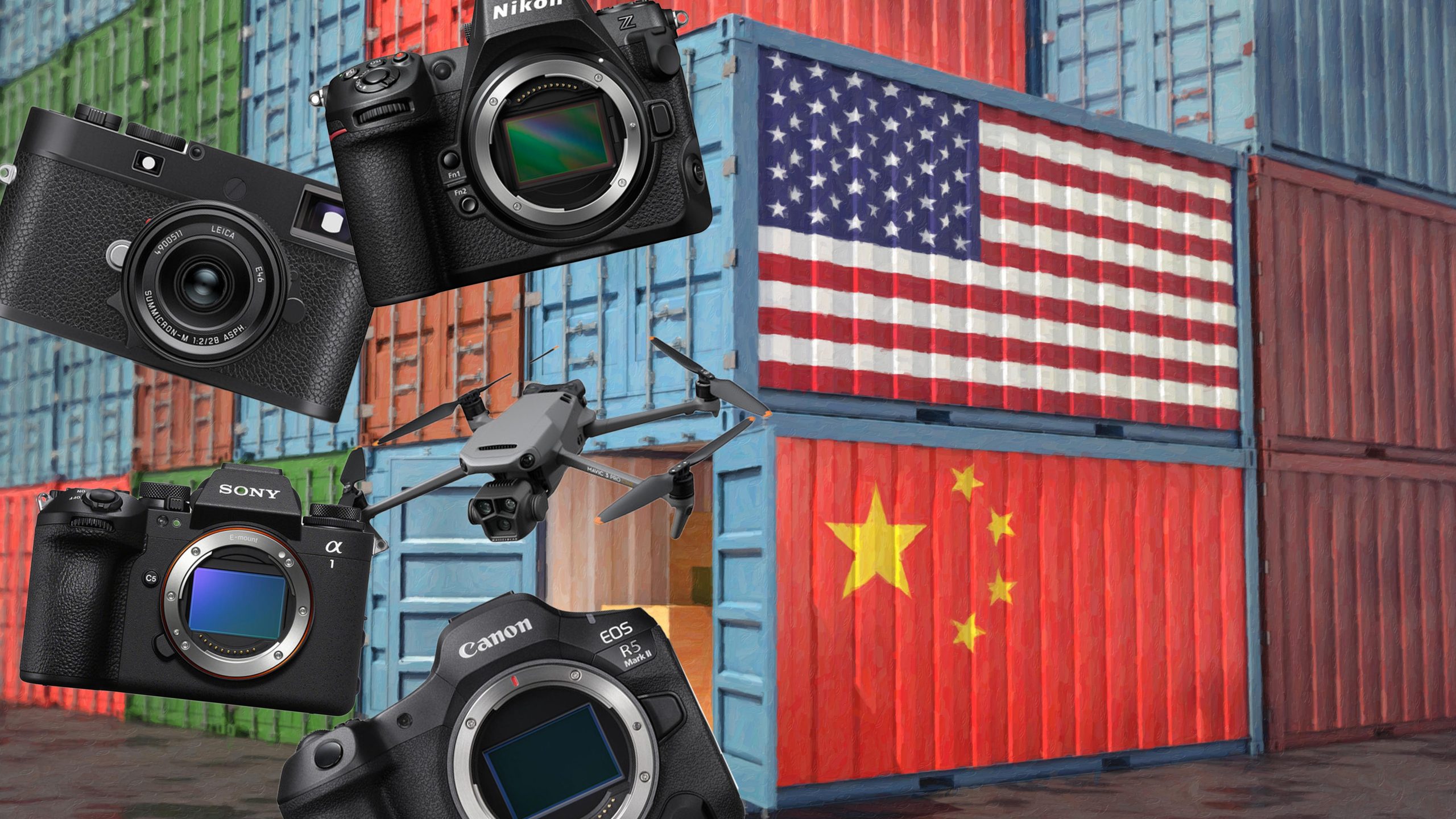
I don’t want to sound alarmist, but if you’re stateside and thinking about buying any new camera gear (or, indeed, Apple products), you might want to seriously consider buying now. Otherwise, you could be paying an arm and a leg more for the exact same products now that Trump’s trade tariffs have been put in place.
I’d like to clarify that this article is merely for information, here at DIYP we are staying politically neutral. Please keep any comments friendly and free from political diatribes, as I’m sure most of our lovely readers usually do 😉
What are the New Tariffs?
For anyone who’s been living off-grid or under a rock for the past week, let’s just go over what these tariffs are. Last week, President Trump announced new trade tariffs that will be implemented on imports from other countries into the USA. The rest of the world has spent the week reeling from the news due to the unprecedented high rates. The move is to promote America-made manufacturing and products. However, in reality, the effects are more complicated.
These tariffs are essentially an import tax and are to be paid by the importer when the goods enter the USA. Obviously, these taxes will be passed onto the consumer so that the business importing items can maintain their usual profit margin (although many will likely take a hit too). If you want a detailed economic breakdown, then there are several good sources; however, in basic terms, this means that prices will likely rise for the average American consumer. This includes camera equipment.
These countries are to have the following tariffs placed on them:
- Japan: 24%
- China 34%
- Vietnam: 46%
- Thailand 36%
- EU: 20%
How Will Trump’s Tariffs Affect Camera Gear?
“All well and good,” you might think. “We need jobs and industry in America, and America first isn’t a bad stance.” But let’s take a quick look at where most camera equipment is manufactured (hint: it’s mostly not in the USA).
Mirrorless Rumours helpfully published a list of the locations where most camera products are manufactured. First, let’s look at the ones based in the USA. These would be RED cine cameras (although now that Nikon owns them that could change) and some Blackmagic products (although Blackmagic is actually Australian-owned). Additionally, some specialist scientific, military, and industrial cameras are made in the US, such as FLIR, Teledyne DALSA, and Vision Research, which produce high-speed, thermal, or industrial-grade cameras.
You’ll notice that all of these cameras are pretty specialised (either for cinema or research) and do not include any of the major camera brands. Here’s where those household names are manufactured:
As you can see, the majority of the world’s cameras are manufactured in a small concentration of countries. These same countries are set to be hit by between 20 and 46% of import tariffs, if they go ahead as stated last week by President Trump.
Sony Alpha Rumours published a worst-case scenario table of potential camera prices after the tariffs were applied. A Canon R5 Mark II, which currently sells for $3,999, could end up costing $4,958.76 after the 24% tariff is applied. Similarly, an already costly Leica M11 manufactured in Germany will end up costing $10,794.00 rather than the previous $8,995.
Remember that this will also apply to lenses, film stocks, lighting gear, bags, and other accessories manufactured outside of the US.
Will Camera Brands Companies Move Manufacturing to the U.S.?
Ordinarily, tariffs are applied to protect the manufacturing interests of the country applying them in the hope that they will force companies to open manufacturing bases in the US. However, the short-term outlook is that this is incredibly difficult and costly to implement and is not a viable short-term solution if there is no infrastructure already in place. Not to mention, the labour costs are drastically higher in the USA than in Vietnam, for example.
However, the good news is that the camera brands do value their not-insignificant US customer base and likely don’t want to lose those sales. DJI recently confirmed to DCW that “Tariffs are one of several factors that we consider in our comprehensive pricing strategy (…) Our commitment to closely monitoring relevant policies and economic indicators is unwavering, as is our dedication to providing high-quality products at the best possible price.”
What are the Likely Short-Term Effects?
There are rumours that these tariffs will be re-negotiated, so we mustn’t panic and assume that the world will spiral into an economic depression. However, it is likely that camera prices will increase. My stab-in-the-dark guess is that prices will increase globally, not just in the USA, to keep markets somewhat stable in a global industry and additionally to discourage black-market trading.
Another possible outcome is that the camera brands will delay launching new products, particularly if there is a threat of an economic downturn.
Similarly, the second-hand camera gear market is likely to be affected too, as it reacts to supply and demand, so expect eBay and MPB deals to be more pricey as well. Our advice would be to buy any gear you’re considering now, while current stocks last (although even those could end up with an anticipatory increase in price).

